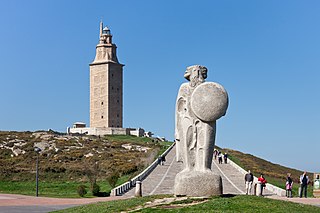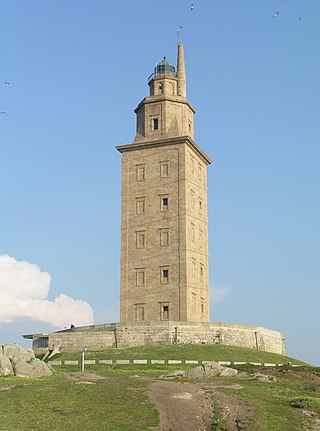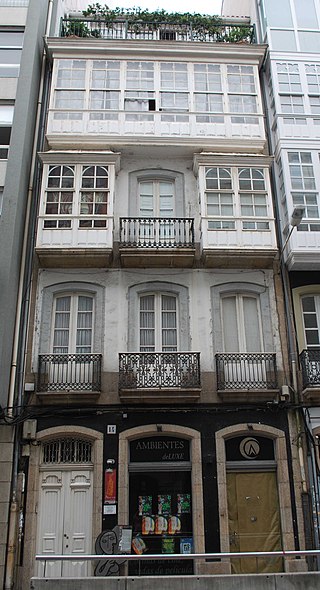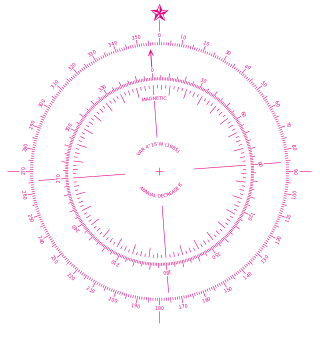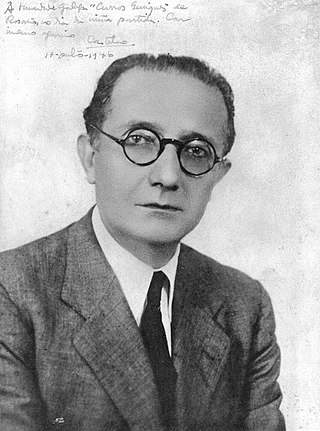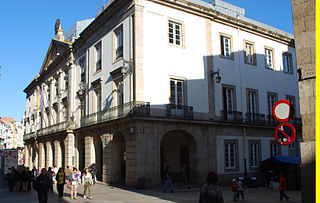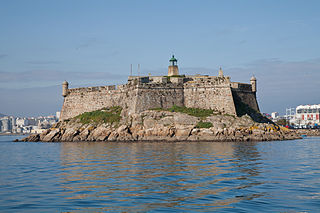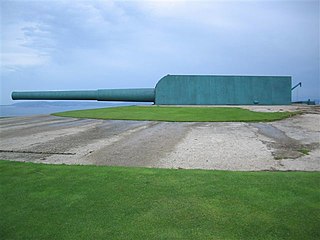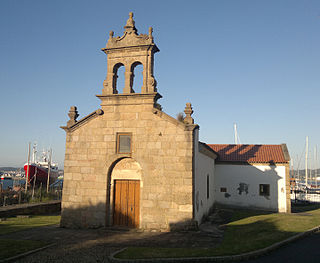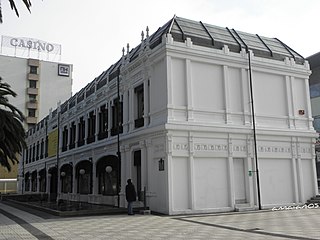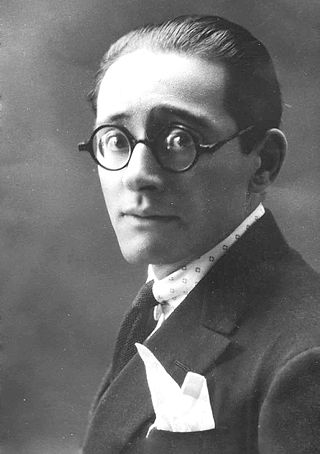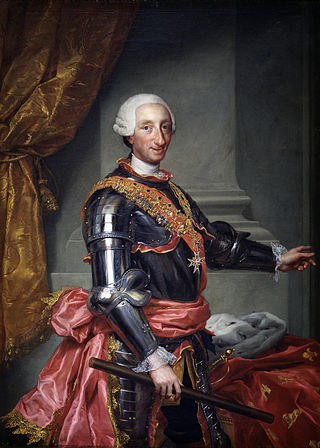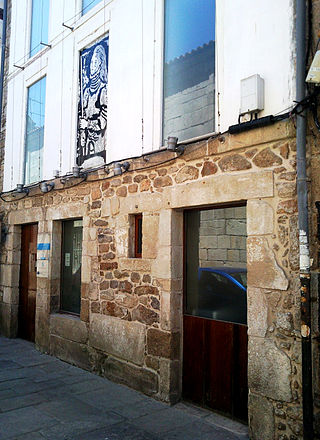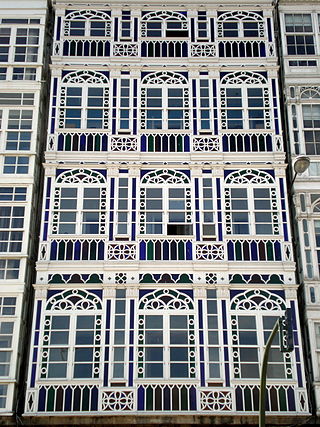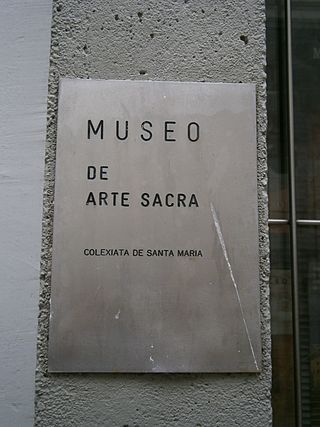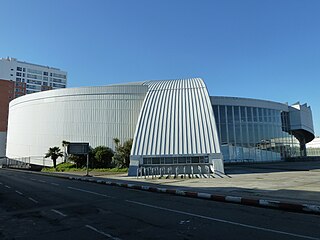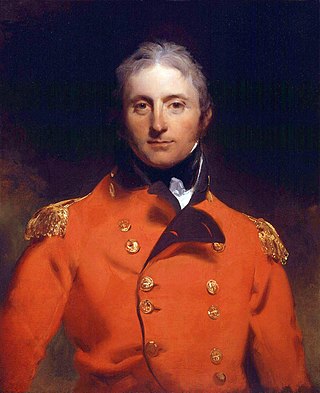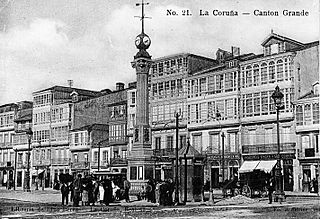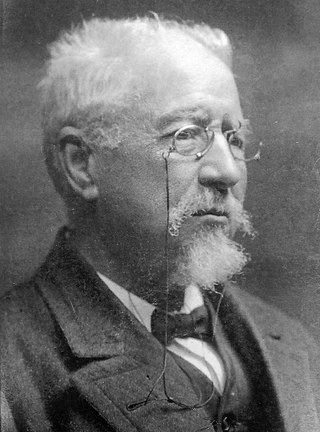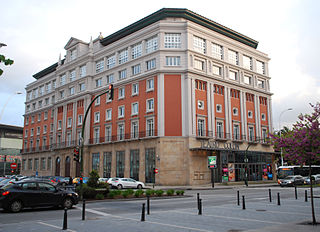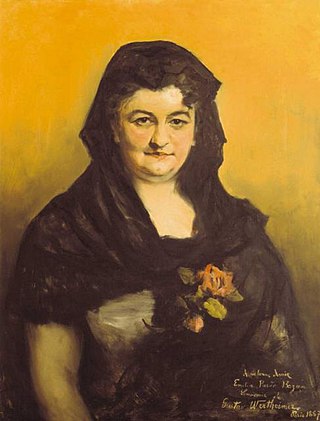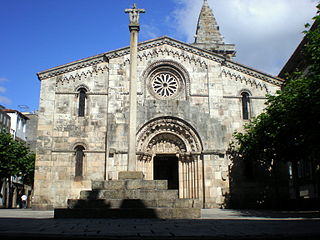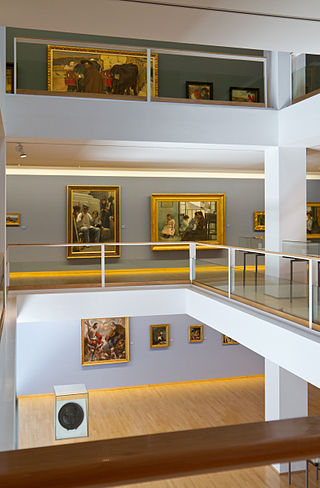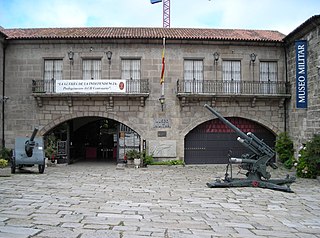26 Sights in A Coruña, Spain (with Map and Images)
Legend
Premium Sights
Book tickets, guided tours and activities in A Coruña.
Guided Free Walking Tours
Book free guided walking tours in A Coruña.
Explore interesting sights in A Coruña, Spain. Click on a marker on the map to view details about it. Underneath is an overview of the sights with images. A total of 26 sights are available in A Coruña, Spain.
Sightseeing Tours in A CoruñaBreogán is a character in the Lebor Gabála Érenn, a medieval Christian history of Ireland and the Irish. He is supposedly the son of Brath, and is described as an ancestor of the Gaels. The Lebor Gabála purports to be an account of how the Gaels descend from Adam through the sons of Noah and how they came to Ireland.
The Tower of Hercules is the oldest known extant Roman lighthouse. Built in the 1st century, the tower is located on a peninsula about 2.4 km (1.5 mi) from the center of A Coruña, Galicia, in northwestern Spain. Until the 20th century, it was known as the Farum Brigantium. The Latin word farum is derived from the Greek Φάρος, Pharos, for the Lighthouse of Alexandria. The structure stands 55 metres (180 ft) tall and overlooks the North Atlantic coast of Spain. The tower was renovated in 1791.
3. Caronte
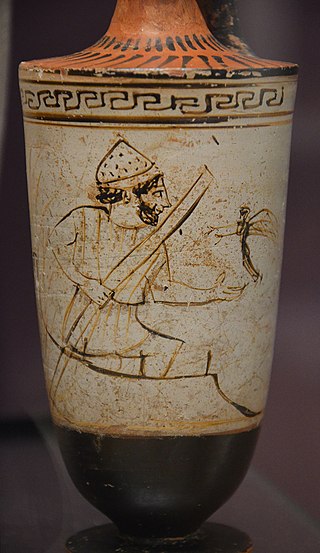
In Greek mythology, Charon or Kharon is a psychopomp, the ferryman of the Greek underworld. He carries the souls of those who have been given funeral rites across the rivers Acheron and Styx, which separate the worlds of the living and the dead. Archaeology confirms that, in some burials, low-value coins were placed in, on, or near the mouth of the deceased, or next to the cremation urn containing their ashes. This has been taken to confirm that at least some aspects of Charon's mytheme are reflected in some Greek and Roman funeral practices, or else the coins function as a viaticum for the soul's journey. In Virgil's epic poem, Aeneid, the dead who could not pay the fee, and those who had received no funeral rites, had to wander the near shores of the Styx for one hundred years before they were allowed to cross the river. Charon also ferried the living mortals Heracles and Aeneas to the underworld and back again.
4. Picasso House Museum
The Picasso House Museum is a museum house in A Coruña opened on December 18, 2002. 33 works are reproduced in the museum, of which 4 are by the father and the others were made by the young Picasso during his stay in the Herculean city, the works are integrated into the decoration of the house in the different rooms except in the bedrooms. Among the works exhibited are oils on canvas, oils on wood, pencil and pen drawings, inks, coals and watercolors. In the house that houses the museum resided the painter Pablo Picasso between 1891 and 1895. It is a typical dwelling in the area of the 19th-century widening, and is preserved the same as it was when the Ruiz Picasso family lived with original furniture, objects and appliances and the time. The house is located on the second floor of 14 Paio Gomez Street, in the middle of the city.
5. Rose Compass
A compass rose, sometimes called a wind rose, rose of the winds or compass star, is a figure on a compass, map, nautical chart, or monument used to display the orientation of the cardinal directions and their intermediate points. It is also the term for the graduated markings found on the traditional magnetic compass. Today, a form of compass rose is found on, or featured in, almost all navigation systems, including nautical charts, non-directional beacons (NDB), VHF omnidirectional range (VOR) systems, global-positioning systems (GPS), and similar equipment.
6. Castelao
Alfonso Daniel Manuel Rodríguez Castelao, commonly known as Castelao, was a Galician politician, writer, painter and doctor. He is one of the fathers of Galician nationalism, promoting Galician identity and culture, and was one of the main names behind the cultural movement Xeración Nós. He was also one of the founders and president of the Galicianist Party and had a great influence on the renovating group of Galician art known as Os renovadores. Castelao is considered to be the most important figure in Galician culture of the 20th century.
7. Rosalía de Castro Theatre
The Rosalía de Castro Theatre is a cultural institution in the city of A Coruña, municipally owned, managed by the Municipal Institute Coruña Espectáculos (IMCE) of the City Council of A Coruña and directed by Javier Sabadie Iglesias. It is a scenic representation centre located in the centre of the Herculean city, in the middle of Calle Real and very close to the Plaza de María Pita. It has also been located since May 20, 1994, the Library of the Provincial Council of A Coruña.
8. Archaeological and Historical Museum - Santo Anton Castle
The Castle of Santo Antón, is a castle built in the 16th century that was part, along with the Castle of Santa Cruz and the Castle of San Diego, of a strategic network of castles and batteries for the defense of the city of A Coruña. It was declared an artistic historical monument in 1949 and since 1994 has been considered as a Cultural Interest Ben with the category of monument. Since its inauguration in 1968 it houses the Archaeological and Historical Museum of A Coruña.
Wikipedia: Castelo de Santo Antón (GL), Website, Payment Website
9. Batería de San Pedro
The cannon battery of Monte de San Pedro is part of an old military coastal defense facility of the Interwar Period, located at the top of Monte de San Pedro in the Galician city of A Coruña. After many years of neglect, St. Peter's Mount was converted into a park and military facilities rehabilitated as a museum. Now Mount San Pedro is an area to visit and enjoy contemplating the landscape and the historic facilities, of which the two huge canyons and bunkers stand out.
10. Capela de Santa María de Oza
The Chapel of Santa Maria de Oza is a Romanesque-style religious temple built between the mid to late 12th century and renovated in the 17th and 18th centuries. It is located in the parish of Oza, in the municipality of A Coruña. After the annexation of the municipality of Oza by A Coruña in 1912, it became one of the oldest buildings in the Herculean municipality. It is part of the Historical-Artistic Complex of the old Sanatorium of Oza.
11. Kiosk Afonso
The Quiosco Alfonso, Kiosco Alfonso or Quiosco Afonso is an exhibition hall in the city of A Coruña. It carries out all kinds of exhibitions, artistic, informative, photographic, industrial and graphic design, architectural, holographic, etc... as well as other types of events, such as conferences, round tables, catalogue editions. It is located in the center of the city, in the Gardens of Méndez Núñez
12. Vicente Risco
Vicente Martínez Risco Agüero was a Galician intellectual of the 20th century. He was a founder member of Xeración Nós, and among the most important figures in the history of Galician literature. He is well regarded for his writings on Galician nationalism, as well as a contributor to the Galician New Narrative. He is also the father of Spanish novelist and critic Antonio Risco.
13. Retrato do rei Carlos III
Charles III was King of Spain in the years 1759 to 1788. He was also Duke of Parma and Piacenza, as Charles I (1731–1735); King of Naples, as Charles VII; and King of Sicily, as Charles III (1735–1759). He was the fourth son of Philip V of Spain and the eldest son of Philip's second wife, Elisabeth Farnese. He was a proponent of enlightened absolutism and regalism.
14. María Pita House Museum
The Casa Museo de María Pita is a museum house in A Coruña reminiscent of the life of this heroine who fought against an English fleet in the 16th century led by Francis Drake. In the sound occupied by a dwelling owned by Maria Pita's first husband, Juan Alonso de Rois, was erected in the 16th century. Today, it is located on The Street of The Blacksmiths.
15. Galerías da Mariña
A gallery is a constructive element and architectural composition, used in a large part of the northern peninsular, especially in the Galician architecture of the 19th and 20th centuries. In Galician residential bourgeois architecture, it reached its highest degree of development by becoming a fundamental part of residential buildings.
16. Collegiate Church Religious Art Museum
The Museum of Sacred Art of the Collegiate Church of Santa María do Campo is a museum in A Coruña. It exhibits a collection of silver pieces, of a religious nature, belonging to the Collegiate Church of Santa María do Campo, of different eras and artistic styles, among which stands out a custody of the late XVII.
Wikipedia: Museo de Arte Sacra da Colexiata de Santa María do Campo (GL)
17. Coliseum
Coliseum da Coruña is an indoor arena for concerts and shows used in A Coruña, Galicia, Spain. The venue holds 11,000 people for concerts. It was designed by Japanese architect Arata Isozaki, built in 1990 and open on August 12, 1991. It is also occasionally used for ice skating and bull fighting.
18. Sir John Moore's Tomb
Lieutenant-General Sir John Moore, also known as Moore of Corunna, was a senior British Army officer. He is best known for his military training reforms and for his death at the Battle of Corunna, in which he repulsed a French army under Marshal Soult during the Peninsular War.
19. Obelisk
The Obelisk of the Cantons is a monument of the city of A Coruña, located in the street of the Cantón Grande. It was built in 1895 in memory of Aureliano Linares Rivas, deputy, senator and minister of Santiago de Compostela during the regency of Maria Cristina.
20. Manuel Murguía
Manuel Antonio Martínez Murguía was a Galician journalist and historian who created the Real Academia Galega. He was one of the main figures in Galician Rexurdimento movement. He is also remembered as Rosalía de Castro's husband, publisher and main supporter.
21. Colon Theatre
The Teatro Colón is a scenic performance centre located in the gardens of Méndez Núñez, centre of the city of A Coruña. The Teatro Colón is owned by the Provincial Council of A Coruña and managed by Novacaixagalicia since its reopening in 2006.
22. Emilia Pardo Bazán House Museum
The Casa Museum of Emilia Pardo Bazán is a museum house located in the family home of the Countess in A Coruña. Today he shares dependencies with the Royal Galician Academy, on which he depends, and has been bequeathed by his heirs.
23. Aquarium Finisterrae - Fish House
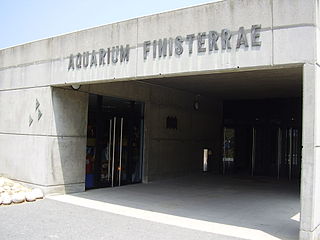
Aquarium Finisterrae is an aquarium located in A Coruña, Galicia, Spain. It is an interactive centre of the sciences of marine biology, oceanography. It advocates wildlife preservation, particularly the sea ecosystem and sea life.
Wikipedia: Aquarium Finisterrae (EN), Website, Payment Website
24. Colexiata de Santa María do Campo
The Royal Collegiate Church of Santa María do Campo is a Roman Catholic temple located in A Coruña. She was also known with the appeals of the Sea and the Portal. It was declared an Asset of Cultural Interest on June 3, 1931.
25. The Fine Arts Museum
The Museum of Fine Arts of A Coruña, state-owned and managed transferred to the Ministry of Culture, Education and University of the Xunta de Galicia, is a modern building that sits in the former convent of the Capuchins.
26. Military Historical Museum of A Coruña
The Regional Military Museum of A Coruña is dedicated to military history and pre-Roman objects - mainly Galatians - it has a large collection of weapons, uniforms, flags, models, maps and material of interest.
Share
Disclaimer Please be aware of your surroundings and do not enter private property. We are not liable for any damages that occur during the tours.
